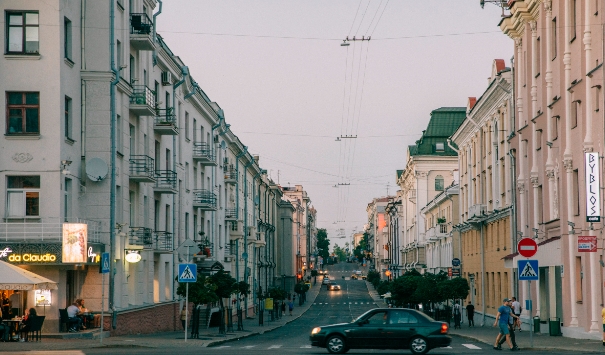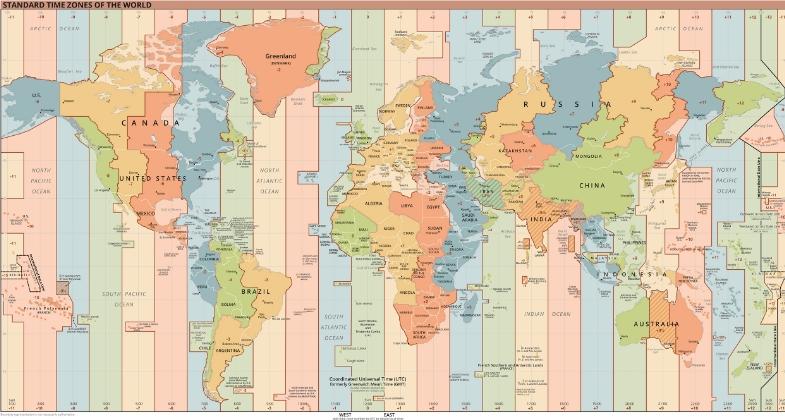10 Fascinating Facts about Time Zones: Understanding the Differences in Time across the World
Just over 180 years ago, the world transitioned to a unified system of time zones, aiming for convenience. However, humanity’s penchant for complexity has made the concept of time zones far from straightforward. Why do neighboring European nations operate on different time scales, while vast countries like China adhere to a single time zone? Uncover these and more intriguing facts about time zones that shed light on this fascinating topic.
Why are the times different in Europe?
In an astronomical sense, countries like Spain, Andorra, France, Monaco, Belgium, Luxembourg, and the Netherlands should technically align with the zero time zone. Similarly, the UK, Ireland, and Portugal should fall in line. However, in a surprising twist, these countries operate on Central European Time (CET, or UTC +1), placing them one hour ahead of their astronomical counterparts. Delve into the intriguing reasons behind this time zone discrepancy in Europe.
The origins of the time zone disparities in Europe can be traced back to World War II. During the war, occupied countries adjusted their time to match the German time zone. Dictator Franco followed suit in Spain, resulting in neighboring Portugal and Spain having different time zones. However, after the war, these countries did not revert to their previous time settings, leading to the establishment of the Central European time zone. Interestingly, this time zone includes countries beyond Central Europe, stretching from Spain to Norway, despite the name. Today, this common time zone serves as a practical solution for facilitating economic interactions and synchronizing work processes within the European Union.

In China, time is relative
Although China spans across five different time zones geographically, a unified time system known as “Beijing Standard Time” (UTC +8) is observed throughout the entire country. This decision was made by the Communist Party in 1949, as they believed that a shared time would foster a greater sense of national unity among the Chinese people. As a result, regardless of their geographical location, all regions in China adhere to the same standard time.
The adoption of Beijing Standard Time in China has not proven to be convenient for all residents, particularly those in the western provinces. Astronomical time in these regions differs from Beijing by a significant -2 hours, causing the working day to start later than in the capital. Adding to the complexity, the westernmost autonomous region of Xinjiang follows its own unofficial time zone, UTC +6. This is followed by the Uighur ethnic group, which constitutes about half of Xinjiang’s population. The other half adheres to Beijing time, creating significant challenges in coordinating social activities and daily life. Xinjiang may well be the epitome of a place where time becomes relative.
The solar zenith in China varies across its vast territory, resulting in a relative occurrence that does not always align with noon. In the eastern parts of the country, the sun reaches its highest point at around 11:00, while in the western regions, it reaches its zenith at approximately 15:00. This discrepancy reflects the geographic expanse of China and the influence it has on the timing of the solar zenith throughout the country.
The sun never sets on France
France holds the world record for having the highest number of time zones, with a total of 12. This unique situation is a result of France having various territories scattered across different regions of the globe. From French Polynesia with a time zone of UTC -10 to the Wallis and Futuna Islands with a time zone of UTC +12, France has a presence in multiple time zones worldwide. As a result, it can be said that somewhere on the planet, the sun is always shining over France.
Despite being geographically located in the zero time zone along with Great Britain, the metropolis of France operates on Central European Time (UTC +1). This discrepancy can be attributed to historical and political factors that have influenced the country’s timekeeping practices. As a result, France maintains a time zone that differs from its geographic position.

Journey from yesterday to tomorrow and vice versa
In the vast expanse of the Pacific Ocean, the International Date Line serves as an imaginary boundary that separates calendar days. On one side of this line, time zones are set at UTC -12, while on the other side, they are set at UTC +12. However, in practical terms, neighboring countries often adopt their own temporary rules and adjustments regarding their time zones. This means that the precise alignment of time zones around the International Date Line can vary in practice.
Imagine this unique opportunity in Samoa and American Samoa, located just 150 kilometers apart on opposite sides of the International Date Line. If you want to experience the joy of celebrating your birthday twice, you can begin in Samoa (UTC +13). Then, the following morning, take a short flight to nearby American Samoa (UTC -11), and within just 25 minutes, you will once again land on your birthday. It’s a remarkable chance to enjoy an extended celebration and create unforgettable memories.
A unique phenomenon occurs in Kiribati, where a portion of the islands is situated in the farthest eastern time zone with its own time offset of UTC +14. This makes it the first place on Earth to welcome each new calendar day. As a result, the people of Kiribati have the privilege of being the first to celebrate the New Year. In this region, a fascinating occurrence takes place where three consecutive calendar days coexist simultaneously across the globe: Wednesday midnight in the eastern part of Kiribati, 11:00 on Tuesday in Central Europe, and 23:00 on Monday in American Samoa. It showcases the fascinating diversity and interconnectedness of time across different regions of our planet.
Twisty time zones
In practice, adhering strictly to the meridians of the Earth for time zones is often challenging. It is not feasible to split districts or cities in half and expect one portion to follow one time while the other follows a different time. As a result, in smaller areas, time zones are adjusted to align with administrative boundaries, either expanding or narrowing the time zone accordingly. This approach ensures that neighboring regions share the same time, facilitating smoother coordination and minimizing confusion within localized areas.
Exceptions do exist, such as the case of the small island of Märket in the Baltic Sea, which is divided into two time zones due to being under the control of both Sweden and Finland. Similarly, in certain regions like the territory of Nunavut in Canada, multiple time zones are utilized within the same state. These unique situations reflect the complexities of time zone management in areas with diverse administrative or territorial arrangements.

In the Himalayas, time changes six times
A traveler who dares to conquer the 1000-kilometer Himalayan range will encounter six time changes along the way. Crossing the Indian-Nepalese border, there will be a 15-minute time difference ahead, followed by a 15-minute adjustment back upon crossing the Nepalese-Indian border. At the border between India and China, there will be a time jump of 150 minutes ahead, while at the border of China and Bhutan, a 120-minute adjustment back is necessary. Further, a 30-minute reversal awaits at the Bhutanese-Indian border, and finally, a 60-minute leap forward will occur at the border of India and Myanmar.
Difference in halves and quarters
While the majority of countries follow time zones that differ from Coordinated Universal Time (UTC) by whole hours, there are several exceptions where a 30-minute deviation exists. These countries include India, certain regions of Australia, Sri Lanka, Newfoundland, Iran, Myanmar, and North Korea, where the time difference is half an hour. Furthermore, Nepal and the Chatham Islands in New Zealand have their own unique time zones, with UTC +5:45 and UTC +12:45, respectively.

Mirror time in India and Great Britain
There is a time difference of 5.5 hours between the United Kingdom and India. If you are currently in the UK and need to know the time in India, a simple trick is to turn the round clock face upside down and read the time directly, giving you an accurate representation of the Indian time.
Lose several hours in one step
A unique time difference can be experienced when crossing the border between Pakistan and China, as there is a 3-hour time gap between the two countries. Additionally, crossing the border between Afghanistan and China adds an extra half-hour to the time difference.

There are no time zones at the poles
At the Earth’s poles, where all meridians converge, there is no designated time zone. However, for the sake of practicality, research stations at the North Pole adhere to the time of their respective countries. In the South Pole, New Zealand time is typically used due to the fact that flights to and from the area often pass through New Zealand. This allows for better coordination and synchronization of activities in these remote regions.

